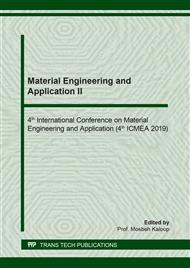p.124
p.132
p.138
p.144
p.150
p.155
p.161
p.166
p.171
Biofuel Production from Jatropha Bio-Oil Derived Fast Pyrolysis: Effect of Catalysts Supported
Abstract:
This research focus on catalytic hydrotreating of Jatropha Bio-oil derived fast pyrolysis into biofuel was investigated to determine the effects of the supported type (Al2O3 TiO2 and Al2O3-TiO2 mix-oxide) and of the variables temperature (300-340 °C). The synthesized catalysts were prepared by sol-gel method for support and wet-impregnation with solution promoter on support, and characterization by BET NH3-TPD XRD and NO-TPD for active site analysis of catalysts. The reaction was carried out in a Parr batch reactor under H2 atmosphere about 50 bar for 2 h. The catalytic activity was evaluated for % fatty acid conversion (%FFA), %HDO, %selective to paraffin/olefin products. The results showed that the CMA gave the %FFA is highest, but low selective products, then the CMT gave the % HDO high than CMA, while the mixed-oxide were proving the %HDO, %FFA conversion and % selective is increasing because the TiO2 incorporated with Al2O3 effect to increase the amount of rim site, it’s active site for HYD partway.
Info:
Periodical:
Pages:
150-154
Citation:
Online since:
May 2020
Keywords:
Price:
Сopyright:
© 2020 Trans Tech Publications Ltd. All Rights Reserved
Share:
Citation:



